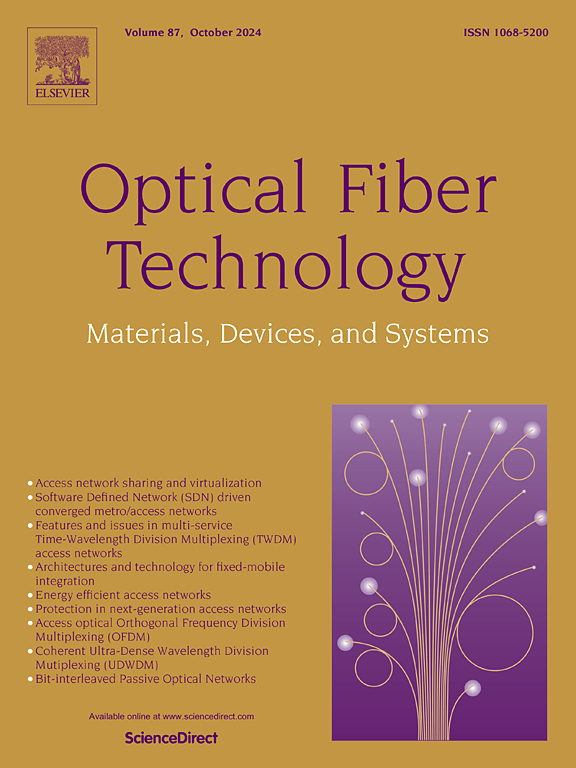Enhanced resource allocation in elastic optical network using deep learning and optimization process
IF 2.6
3区 计算机科学
Q2 ENGINEERING, ELECTRICAL & ELECTRONIC
引用次数: 0
Abstract
The elastic optical network offers several advantages in bandwidth allocation compared to traditional fixed-grid optical networks. These advantages stem from their ability to flexibly and efficiently allocate resources, meeting modern communication networks’ dynamic and diverse demands. It is crucial to handle dynamic traffic loads and proactively manage the resources in an elastic optical network with a productive technique. Deep learning is an effective tool for complex data analysis and real-time decision-making. We address a model that integrates two deep neural networks: generative adversarial network (GAN) for data augmentation; and echo state network (ESN) for network’s requirement prediction. Furthermore, an optimization process is carried out for efficient spectrum allocation. The GAN provides a considerable and reliable quantity of data necessary to train the ESN model that could provide the desired output. The ESN model is further enhanced by optimizing the essential parameters, enabling it to learn diverse traffic patterns and anticipate unusual situations. By using a GAN-ESN approach, there is a substantial benefit in reducing latency, saving energy, and optimizing bandwidth allocation. The simulation results confirm that the proposed scheme can significantly improve the performance of resource management and achieve a high degree of fairness(95%accuracy) in the evaluation metrics.
求助全文
约1分钟内获得全文
求助全文
来源期刊

Optical Fiber Technology
工程技术-电信学
CiteScore
4.80
自引率
11.10%
发文量
327
审稿时长
63 days
期刊介绍:
Innovations in optical fiber technology are revolutionizing world communications. Newly developed fiber amplifiers allow for direct transmission of high-speed signals over transcontinental distances without the need for electronic regeneration. Optical fibers find new applications in data processing. The impact of fiber materials, devices, and systems on communications in the coming decades will create an abundance of primary literature and the need for up-to-date reviews.
Optical Fiber Technology: Materials, Devices, and Systems is a new cutting-edge journal designed to fill a need in this rapidly evolving field for speedy publication of regular length papers. Both theoretical and experimental papers on fiber materials, devices, and system performance evaluation and measurements are eligible, with emphasis on practical applications.
 求助内容:
求助内容: 应助结果提醒方式:
应助结果提醒方式:


